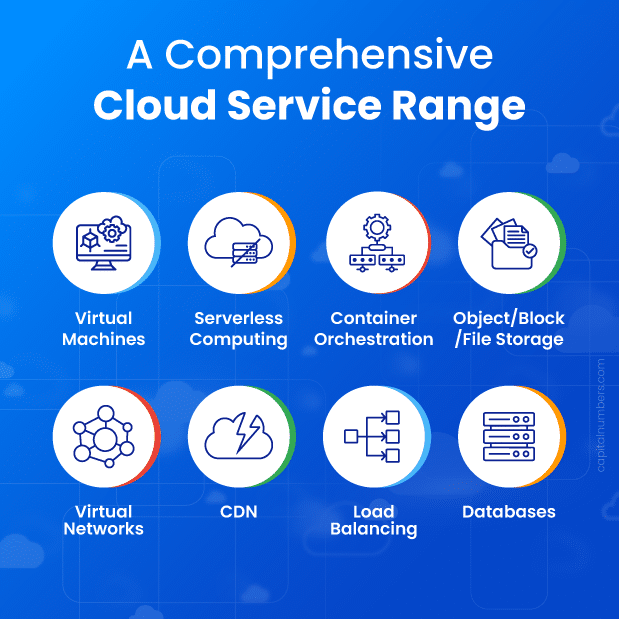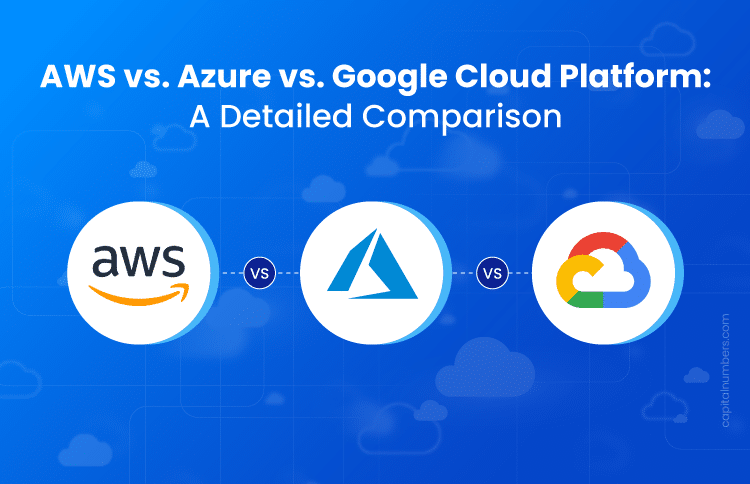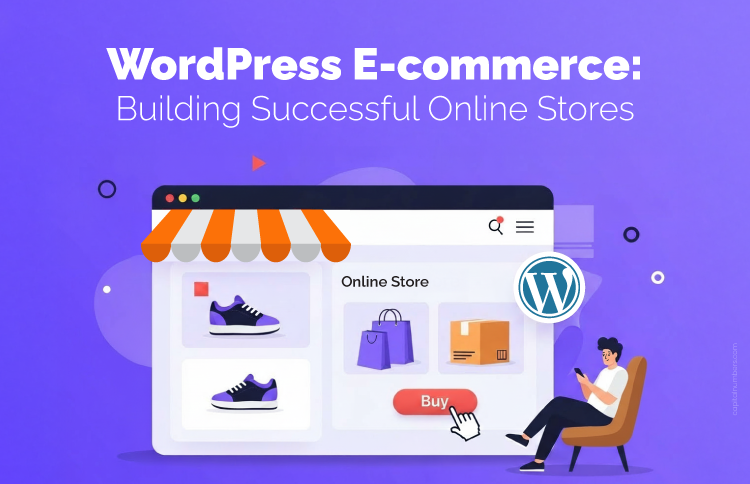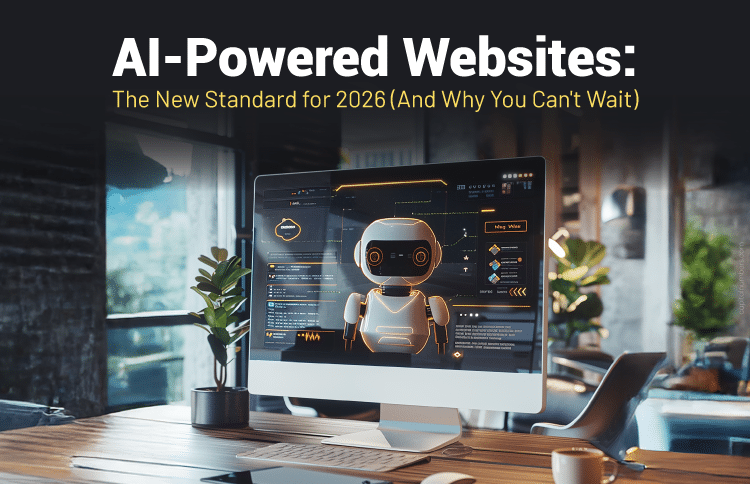AWS vs Azure vs Google Cloud Platform: A Detailed Comparison
Table of Contents
Cloud computing is a major shift in IT infrastructure, providing a wide range of computing services — such as servers, software, storage, databases, and intelligence — over the internet. This model allows businesses to access a shared pool of configurable computing resources on demand, eliminating the need for on-premises data centers and the associated hardware maintenance. It offers flexibility, scalability, and cost efficiency, allowing businesses to focus on innovation rather than infrastructure management.
This blog post aims to provide a comprehensive comparison of three leading cloud platforms: Amazon Web Services (AWS), Microsoft Azure, and Google Cloud Platform (GCP). By examining their core services, pricing models, strengths, weaknesses, and use cases, this analysis will help readers make informed decisions when selecting the most suitable cloud platform for their specific needs.
An Overview of the Big Three in Cloud Computing
Brief History and Market Share
Three key players dominate the cloud computing market: Amazon Web Services (AWS), Microsoft Azure, and Google Cloud Platform (GCP).
- Amazon Web Services (AWS): Launched in 2006, AWS is often seen as the pioneer of cloud computing. Its early entry and consistent innovation have solidified its position as the market leader.
- Microsoft Azure: Introduced in 2010, Azure capitalized on Microsoft’s extensive enterprise customer base and hybrid cloud capabilities to rapidly gain market share. It has become a strong contender in the cloud market.
- Google Cloud Platform (GCP): While a later entrant, GCP has made significant progress with its focus on data analytics, machine learning, and container orchestration. Its strong foundation in data processing and infrastructure has positioned it as a competitive force.
Core Services

All three cloud providers offer a comprehensive suite of cloud services, including:
- Compute: Virtual machines (VMs), serverless computing, container orchestration
- Storage: Object storage, block storage, file storage
- Networking: Virtual networks, load balancing, content delivery networks (CDNs)
- Databases: Relational databases, NoSQL databases, data warehousing
- Other Core Services: Identity and access management (IAM), security, developer tools, and more.
Unique Selling Points
Each cloud platform has distinct strengths and areas of focus:
- AWS: Known for its extensive service catalog, strong developer ecosystem, and global infrastructure. It excels in a wide range of workloads, from web applications to high-performance computing.
- Azure: Offers seamless integration with Microsoft’s on-premises software and services, making it a popular choice for enterprises. Its hybrid cloud capabilities and focus on security are key differentiators.
- GCP: Emphasizes data analytics, machine learning, and open-source technologies. It provides high-performance computing capabilities and cost-effective solutions for data-intensive workloads.
Cloud Compute: AWS, Azure, and GCP Compared
Virtual Machines (VMs)
Virtual machines (VMs) are the foundational building block of cloud computing, providing isolated computing environments within a shared physical server.
- Instance Types: Each cloud provider offers a diverse range of VM instance types, optimized for different workloads. Key considerations include CPU cores, memory, storage, network performance, and GPU acceleration.
- AWS: EC2 instance types (e.g., t2, m5, c5, g4)
- Azure: Virtual Machine sizes (e.g., Standard, Basic, D, F)
- GCP: Machine types (e.g., n1, e2, c2, t2)
- Pricing: VM pricing varies based on instance type, operating system, region, and usage patterns. On-demand, reserved, and spot instances are common pricing models.
- Performance: Factors influencing VM performance include CPU clock speed, memory bandwidth, storage I/O, network throughput, and virtualization overhead.
- Scalability: Cloud platforms offer elastic scalability, allowing users to easily increase or decrease the number of VMs based on demand. Auto-scaling features can automate this process.
Serverless Computing
Serverless computing eliminates the need to manage underlying infrastructure, allowing developers to focus on writing code without worrying about servers.
- Function as a Service (FaaS): This compute model enables execution of code in response to events without provisioning or managing servers.
- AWS: Lambda
- Azure: Azure Functions
- GCP: Cloud Functions
- Use Cases: Serverless computing is ideal for event-driven applications, microservices architectures, data processing pipelines, and web APIs.
- Cost Comparison: Serverless functions typically follow a pay-per-use model, charging based on execution time and memory consumption.
Container Orchestration
Container orchestration platforms automate the deployment, management, and scaling of containerized applications.
- Kubernetes Support: Kubernetes is the de facto standard for container orchestration. All three cloud providers offer managed Kubernetes services.
- AWS: Amazon Elastic Kubernetes Service (EKS)
- Azure: Azure Kubernetes Service (AKS)
- GCP: Google Kubernetes Engine (GKE)
- Managed Services: In addition to Kubernetes, cloud providers offer managed container services for simplified deployment and management.
- Pricing: Costs vary based on the number of nodes, control plane resources, and additional features like load balancing and storage.
Cloud Storage: AWS, Azure, and GCP Compared
Object Storage
Object storage is designed for storing and retrieving large amounts of unstructured data.
- AWS S3: Offers high durability, availability, and scalability. Features include versioning, lifecycle management, and access control lists (ACLs). Pricing is based on storage, data transfer, and request frequency.
- Azure Blob Storage: Provides block, append, and page blobs for various data types. Offers hot, cool, and archive tiers for cost optimization. Strong integration with Azure services.
- Google Cloud Storage: Offers multi-region and near-line storage options. Supports various access control mechanisms and integrates with Google Cloud ecosystem.
Block Storage
Block storage provides raw block-level access to storage, similar to traditional hard drives.
- AWS EBS: Offers various volume types (SSD, magnetic, HDD) with different performance and cost characteristics. Supports snapshots for backup and recovery.
- Azure Disk Storage: Provides managed disks for VMs with options for standard, premium, and ultra SSD performance tiers. Offers snapshots and incremental backups.
- Google Persistent Disk: Offers SSD and HDD volumes with different performance levels. Supports snapshots and zonal replication for high availability.
File Storage
File storage allows multiple users to access and modify data through standard file protocols.
- AWS EFS: Fully managed file system that can be mounted by multiple EC2 instances. Offers NFSv4.1 protocol support and automatic scaling.
- Azure Files: Fully managed file share accessible through SMB or NFS protocols. Supports active directory integration and Azure file sync for on-premises file synchronization.
- Google Cloud Filestore: Fully managed file storage service supporting NFSv3 and NFSv4.1 protocols. Offers multi-zone availability and automatic scaling.
Key Performance Indicators:
- Latency: The time it takes to access data.
- Throughput: The amount of data that can be transferred per second.
- IOPS: Input/Output Operations Per Second, measuring the number of read and write operations a storage system can handle.
- Consistency: The level of data consistency across multiple reads and writes.
- Durability: The ability of the storage system to protect data against failures.
Cost Considerations:
- Storage costs: Based on storage capacity and data transfer.
- Performance tiers: Higher performance tiers usually come with higher costs.
- Request costs: Some providers charge for API requests or data retrieval.
Choosing the right storage type depends on factors such as workload characteristics, performance requirements, cost constraints, and data durability needs.
Ready to elevate your business with custom cloud solutions? Our cloud application development services deliver scalable and efficient solutions tailored to your unique needs. Contact us today to unlock the cloud’s full potential.
Cloud Database: AWS, Azure, and GCP Compared
Relational Databases
Relational databases store data in structured tables with rows and columns, enforcing data integrity and consistency.
- AWS RDS: Offers managed relational database services for MySQL, PostgreSQL, SQL Server, Oracle, MariaDB, and Amazon Aurora. Features include high availability, automatic backups, scaling, and performance optimization. Pricing is based on instance type, storage, and network traffic.
- Azure SQL Database: Fully managed relational database service supporting SQL Server. Offers elastic pools for resource sharing, geo-replication for disaster recovery, and performance tiers for different workloads. Pricing is based on DTU (Database Transaction Unit) or vCore models.
- Google Cloud SQL: Managed relational database service for MySQL, PostgreSQL, and SQL Server. Provides high availability, automatic backups, and scaling options. Pricing is based on machine type, disk size, and network traffic.
NoSQL Databases
NoSQL databases handle unstructured and semi-structured data, offering flexibility and scalability for large-scale applications.
- Amazon DynamoDB: Fully managed NoSQL database with key-value and document data models. Provides high performance, low latency, and automatic scaling. Pricing is based on provisioned capacity (read and write capacity units) or on-demand capacity.
- Azure Cosmos DB: Globally distributed NoSQL database supporting multiple data models (key-value, document, graph, and table). Offers automatic sharding, global distribution, and multiple consistency levels. Pricing is based on provisioned throughput (request units) and storage.
- Google Cloud Firestore: NoSQL document database designed for mobile and web applications. Offers real-time synchronization, offline support, and automatic scaling. Pricing is based on document size, number of reads and writes, and storage.
Data Warehousing
Data warehouses store and process large volumes of data for business intelligence and analytics.
- Amazon Redshift: Fully managed petabyte-scale data warehouse for analytics. Offers columnar storage, compression, and SQL-based querying. Pricing is based on cluster size, node type, and data transfer.
- Azure Synapse Analytics: Unified analytics service combining data warehousing, data integration, and machine learning. Offers serverless and dedicated SQL pools for different workload types. Pricing is based on compute resources, storage, and data ingestion.
- Google BigQuery: Fully managed serverless data warehouse for large-scale analytics. Offers petabyte-scale storage, fast query performance, and integration with other Google Cloud services. Pricing is based on data storage, query processing, and data ingestion.
Key Performance Indicators:
- Latency: Response time for queries and data access.
- Throughput: Ability to handle concurrent requests and data volume.
- Scalability: Capacity to handle increasing data volumes and workload.
- Consistency: Data consistency guarantees (strong, eventual, or causal).
- Cost-efficiency: Pricing models and cost optimization options.
Choosing the right cloud database depends on factors such as data structure, query patterns, performance requirements, scalability needs, and budget constraints.
Cloud Networking Infrastructure: AWS, Azure, and GCP
Virtual Networks
Virtual Networks (VNs) provide isolated network environments within a cloud platform.
- AWS VPC: A logically isolated section of the AWS cloud where you can launch AWS resources like EC2 instances, databases, and other resources. It provides customizable network configurations, including subnets, route tables, network access control lists (NACLs), and security groups.
- Azure Virtual Networks: A logical isolation of the Azure cloud into a private network. It enables you to deploy resources like virtual machines, virtual networks, and subnets. Azure provides network security groups (NSGs) and user-defined routes (UDRs) for network control.
- Google Virtual Networks (VPC): A logically isolated network segment in the Google Cloud Platform. It allows you to create subnets, firewall rules, and route tables. Google Cloud provides network security groups (NSGs) for inbound and outbound traffic filtering.
Key Performance Indicators:
- Network latency: The time it takes for data to travel between resources within the virtual network.
- Throughput: The amount of data that can be transferred per second within the virtual network.
- Scalability: The ability to expand the virtual network to accommodate increasing workloads.
Load Balancing
Load balancing distributes incoming traffic across multiple instances to improve application performance, reliability, and scalability.
- AWS Elastic Load Balancing (ELB): Offers multiple load balancer types, including Application Load Balancer (ALB), Network Load Balancer (NLB), and Classic Load Balancer. Provides features like health checks, sticky sessions, and target group configuration.
- Azure Load Balancer: Provides both standard and basic load balancers. Standard load balancer offers layer 4 and layer 7 load balancing capabilities, while basic load balancer is for layer 4 only.
- Google Cloud Load Balancing: Offers HTTP(S), TCP, SSL, and UDP load balancing. Provides features like health checks, URL mapping, and global load balancing.
Key Performance Indicators:
- Latency: The time it takes to distribute traffic to backend instances.
- Throughput: The amount of traffic a load balancer can handle.
- Connection rate: The number of connections a load balancer can handle per second.
Content Delivery Networks (CDNs)
CDNs deliver content to users from edge locations, improving website performance and reducing latency.
- AWS CloudFront: A global CDN that delivers web and streaming content with low latency. Provides features like edge locations, custom origins, and real-time monitoring.
- Azure CDN: A global CDN service that delivers content to users from edge locations. Offers integration with Azure Storage, Azure Media Services, and other Azure services.
- Google Cloud CDN: A global CDN that delivers web and video content with low latency. Provides features like edge locations, origin shielding, and real-time analytics.
Key Performance Indicators:
- Latency: The time it takes to deliver content to users.
- Throughput: The amount of data that can be delivered per second.
- Cache hit ratio: The percentage of requests served from the CDN cache.
Choosing the right cloud networking components depends on factors such as application architecture, performance requirements, scalability needs, and cost considerations.
Cloud Security: A Comparative Analysis
Identity and Access Management (IAM)
IAM is the foundation of cloud security, ensuring that only authorized users can access specific resources.
- AWS IAM: Offers granular control over user permissions, roles, and policies. Features include multi-factor authentication (MFA), identity federation, and single sign-on (SSO).
- Azure Active Directory (Azure AD): Provides identity and access management for both cloud and on-premises applications. Offers features like conditional access, self-service password reset, and Azure AD B2B collaboration.
- Google Cloud IAM: Offers fine-grained access control for cloud resources. Features include roles, permissions, and organization policies. Integrates with Google Workspace for identity management.
Key features:
- User management: Creating, modifying, and deleting users.
- Group management: Organizing users into groups for efficient permission management.
- Role-based access control (RBAC): Assigning permissions based on roles and responsibilities.
- Policy management: Defining access control policies at different levels.
- Authentication methods: Supporting various authentication mechanisms (password, MFA, SSO).
- Auditing and logging: Tracking user activity and access attempts.
Data Encryption
Data encryption safeguards data from unauthorized access.
- AWS Key Management Service (KMS): Manages and controls cryptographic keys. Offers encryption at rest and in transit for various services. Supports hardware security modules (HSMs) for enhanced security.
- Azure Key Vault: Manages and protects cryptographic keys, secrets, and certificates. Provides key rotation, access control, and integration with Azure services.
- Google Cloud Key Management Service (KMS): Manages encryption keys for protecting data at rest and in transit. Offers hardware security modules (HSMs) and key rotation.
Key features:
- Encryption algorithms: Supporting various encryption standards (AES, RSA, etc.).
- Key management: Creating, storing, and managing encryption keys.
- Key rotation: Regularly updating encryption keys to mitigate risks.
- Data encryption at rest: Protecting data stored on disks or in object storage.
- Data encryption in transit: Securing data transmitted over networks.
Compliance Certifications
Compliance certifications demonstrate a cloud provider’s commitment to security and data protection standards.
- AWS: Offers a wide range of compliance certifications, including SOC 2, ISO 27001, PCI DSS, HIPAA, GDPR, and FedRAMP.
- Azure: Provides a comprehensive set of compliance certifications, including SOC 2, ISO 27001, PCI DSS, HIPAA, GDPR, and FedRAMP.
- Google Cloud: Offers a strong compliance portfolio, including SOC 2, ISO 27001, PCI DSS, HIPAA, GDPR, and FedRAMP.
Key considerations:
- Industry-specific compliance requirements (e.g., healthcare, finance, government).
- Geographic data residency and sovereignty regulations.
- Audit and reporting capabilities.
By understanding the security features and compliance certifications offered by each cloud provider, organizations can make informed decisions to protect their sensitive data and meet regulatory obligations.
You May Also Read: 12 Best Practices to Secure Your API in the AWS Cloud
Cloud Cost Management: Balancing Performance and Budget
Pricing Models
Cloud providers offer various pricing models to cater to different usage patterns and budget constraints.
- On-demand pricing: Pay for resources as you use them, offering flexibility but potentially higher costs for sustained usage.
- Reserved instances: Commit to a specific instance type, region, and term (1 or 3 years) in exchange for significant discounts.
- Spot instances: Bid on unused EC2 capacity, offering substantial savings but with the risk of interruption.
- Savings Plans: A flexible pricing model that provides a consistent hourly rate for a mix of on-demand usage.
Cost Management Tools
Cloud providers offer robust tools to help you understand and control your cloud spending.
- AWS Cost Explorer: Provides detailed cost and usage reports, allowing you to analyze spending trends and identify cost-saving opportunities.
- Azure Cost Management + Billing: Offers comprehensive cost management capabilities, including cost allocation, budgeting, and forecasting.
- Google Cloud Cost Management: Provides insights into cloud resource usage and costs, helping you optimize spending and identify cost anomalies.
Key features:
- Cost allocation: Assigning costs to different departments or projects.
- Budgeting: Setting spending limits and receiving alerts when approaching budget thresholds.
- Forecasting: Predicting future costs based on historical usage data.
- Rightsizing: Recommending optimal instance sizes based on workload requirements.
- Cost anomaly detection: Identifying unusual spending patterns.
Cost Optimization Strategies
Effective cost management involves a combination of technical and financial strategies.
- Rightsizing instances: Ensure instances are appropriately sized for workloads to avoid overprovisioning.
- Leverage reserved instances and savings plans: Take advantage of upfront commitments for cost savings.
- Utilize spot instances for flexible workloads: Consider spot instances for non-critical workloads to reduce costs.
- Implement auto-scaling: Adjust resources based on demand to optimize costs.
- Optimize storage usage: Use appropriate storage tiers and lifecycle management policies.
- Take advantage of free tiers and discounts: Explore free tiers and discounts offered by cloud providers.
- Monitor and analyze costs regularly: Use cost management tools to track spending and identify opportunities for optimization.
- Consider cost-effective alternatives: Explore managed services and serverless computing options.
- Implement cost governance policies: Establish guidelines and controls for cloud spending.
By following these best practices and utilizing the available cost management tools, organizations can significantly reduce cloud expenses while maintaining performance and reliability.
Developer Tools and Ecosystem: A Comparative Analysis
Developer Tools and SDKs
A robust set of developer tools and SDKs is crucial for accelerating application development.
- AWS: Offers a comprehensive suite of tools including AWS SDKs, AWS CLI, AWS Cloud9, AWS CodeCommit, AWS CodeBuild, AWS CodeDeploy, and AWS CodePipeline. These tools cover a wide range of development and deployment needs.
- Azure: Provides Azure SDKs, Azure CLI, Azure Portal, Visual Studio Code, Azure DevOps, and Azure Functions. These tools offer a strong foundation for building and deploying Azure applications.
- Google Cloud: Offers Google Cloud SDK, Cloud Shell, Cloud Code, Cloud Build, and Cloud Deploy. These tools provide a comprehensive developer experience for building and deploying applications on GCP.
Key features:
- SDKs: Language-specific libraries for interacting with cloud services.
- CLIs: Command-line interfaces for managing cloud resources.
- IDEs: Integrated development environments for code editing, debugging, and deployment.
- CI/CD: Continuous integration and continuous delivery pipelines for automated builds and deployments.
- Serverless development: Tools for building and deploying serverless applications.
Integration with Other Services
Seamless integration with other cloud services and third-party applications is essential for building complex solutions.
- AWS: Offers extensive integration capabilities with a vast ecosystem of services and partners. AWS Lambda integrates with various AWS services and third-party applications through triggers and events.
- Azure: Provides strong integration with Microsoft products and services, as well as a growing ecosystem of partners. Azure Logic Apps and Azure Functions enable integration with various systems.
- Google Cloud: Offers integration with Google Workspace, other Google Cloud services, and third-party applications through APIs and connectors. Cloud Functions provides serverless integration capabilities.
Key features:
- API integration: Accessing cloud services through APIs.
- Connectors: Pre-built integrations with popular applications and services.
- Serverless integration: Triggering functions based on events from other services.
- Data integration: Moving data between cloud services and on-premises systems.
Accelerate your digital transformation with our API development and integration services. We create scalable, secure, and high-performance APIs tailored to your specific needs. Contact us to discuss your project today.
Community and Support
A strong developer community and comprehensive support resources are essential for successful cloud adoption.
- AWS: Boasts a large and active developer community with extensive documentation, forums, and training resources. AWS offers various support plans to meet different customer needs.
- Azure: Has a growing developer community with a wealth of documentation, tutorials, and training materials. Azure provides different support tiers to assist customers.
- Google Cloud: Offers a strong developer community with comprehensive documentation, tutorials, and code samples. Google Cloud provides various support options, including technical support and managed services.
Key factors:
- Community size and activity: The number of developers and contributors to the community.
- Documentation and tutorials: The quality and availability of learning resources.
- Support options: The range of support plans and channels available.
- Developer forums and communities: Online platforms for developers to interact and share knowledge.
By carefully evaluating developer tools, ecosystem integration, and community support, developers can choose the cloud platform that best aligns with their project requirements and preferences.
Use Cases and Industry Focus: AWS, Azure, and GCP
Industry-Specific Strengths
Each cloud provider has tailored its offerings to address specific industry needs:
- AWS: Known for its strong presence in e-commerce, media and entertainment, and financial services. Offers specialized services like Amazon SageMaker for machine learning, AWS IoT Core for IoT applications, and AWS Financial Services for compliance-heavy workloads.
- Azure: Excels in hybrid and multi-cloud environments, making it popular in enterprise, government, and healthcare sectors. Offers solutions like Azure Healthcare API for healthcare data management and Azure Government Cloud for meeting stringent security requirements.
- GCP: Strong in data analytics, machine learning, and high-performance computing. It’s gaining traction in media, gaming, and scientific research due to its focus on data-intensive workloads and AI.
Real-World Cloud Migrations
Successful cloud migrations often involve overcoming challenges and leveraging platform-specific strengths.
- Financial Services: Many banks and financial institutions have migrated core systems to the cloud for improved scalability, disaster recovery, and cost efficiency. AWS and Azure are popular choices due to their robust security and compliance features.
- Healthcare: Healthcare providers have adopted cloud solutions for electronic health records (EHR), medical imaging, and genomics research. Azure’s healthcare-specific services and GCP’s data analytics capabilities are often leveraged.
- Retail: Online retailers rely on cloud infrastructure for e-commerce platforms, inventory management, and customer analytics. AWS’s scalability and reliability, combined with Azure’s hybrid cloud capabilities, are beneficial for this sector.
- Media and Entertainment: Streaming services, content delivery, and video processing are heavily cloud-dependent. AWS and GCP’s media-specific services and strong compute capabilities make them popular choices.
- Gaming: Cloud gaming and game development benefit from cloud-based infrastructure. GCP’s gaming-specific tools and AWS’s compute power are often leveraged.
By carefully evaluating industry-specific needs, leveraging platform strengths, and following best practices, organizations can successfully migrate to the cloud and reap its benefits.
How to Choose the Right Cloud Platform
Selecting the optimal cloud platform requires a comprehensive evaluation of various factors:
- Workload Requirements: Identify the specific computational, storage, and networking needs of your applications. Consider factors like compute-intensive, data-intensive, or I/O-bound workloads.
- Scalability: Assess the platform’s ability to handle fluctuating workloads and scale resources up or down as needed.
- Performance: Evaluate factors like latency, throughput, and processing power to meet application performance requirements.
- Cost Optimization: Analyze pricing models, cost management tools, and opportunities for cost savings.
- Security and Compliance: Ensure the platform adheres to industry regulations and provides robust security features.
- Geographic Location: Consider data residency requirements and proximity to end-users for optimal performance and latency.
- Developer Tools and Ecosystem: Assess the availability of development tools, SDKs, and community support.
- Vendor Lock-In: Evaluate the ease of migrating workloads to other platforms to avoid vendor dependence.
Decision Matrix
To compare different cloud platforms based on specific requirements, create a decision matrix with the following columns:
- Cloud Platform: AWS, Azure, GCP (or other relevant platforms)
- Evaluation Criteria: List the factors identified above (e.g., scalability, cost, security)
- Weighting: Assign importance to each criterion based on your priorities.
- Rating: Score each platform based on its performance against each criterion.
- Total Score: Calculate the weighted score for each platform.
This matrix will help you visualize and compare different options based on your specific needs.
Hybrid and Multi-Cloud Strategies
While selecting a single cloud provider might suffice for some organizations, adopting a hybrid or multi-cloud strategy can offer additional benefits:
- Hybrid Cloud: Combines on-premises infrastructure with one or more public clouds. Ideal for workloads requiring low latency, data sovereignty, or legacy system integration.
- Multi-Cloud: Distributes workloads across multiple public cloud platforms to leverage the best capabilities of each provider. Helps mitigate vendor lock-in and optimize costs.
Key considerations for hybrid and multi-cloud strategies:
- Cloud management platforms: Tools to manage and orchestrate workloads across multiple environments.
- Data consistency: Ensuring data synchronization and consistency across different clouds.
- Security: Implementing robust security measures to protect data and applications.
- Cost optimization: Managing costs across multiple cloud environments.
By carefully considering these factors and adopting a suitable cloud strategy, organizations can maximize the benefits of cloud computing while mitigating risks.
You May Also Read: Simplifying Cloud Web Development with Serverless PHP
Conclusion
AWS, Azure, and GCP, while offering similar core services, possess distinct strengths and cater to different market segments. AWS excels in broad service offerings, a vast ecosystem, and a strong focus on scalability and reliability. It is often the preferred choice for large-scale, complex workloads. Azure offers seamless integration with Microsoft’s on-premises solutions, making it a compelling option for enterprises. Its hybrid cloud capabilities and security features are notable strengths. GCP stands out in data analytics, machine learning, and container orchestration. Its cost-effective solutions and focus on open-source technologies attract developers and data-driven organizations.
Selecting the optimal cloud platform requires a careful evaluation of your specific needs and priorities. A hybrid or multi-cloud strategy can be beneficial for organizations with diverse workloads and complex requirements.
Are you ready to optimize your business with the right cloud solution? Let our expert consultants guide you through the complexities of AWS, Azure, and Google Cloud Platform to find the best fit for your needs. Contact us today to unlock the full potential of cloud computing and drive your business forward.
















